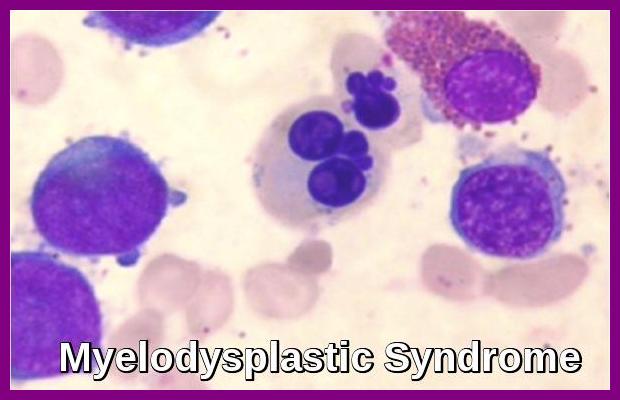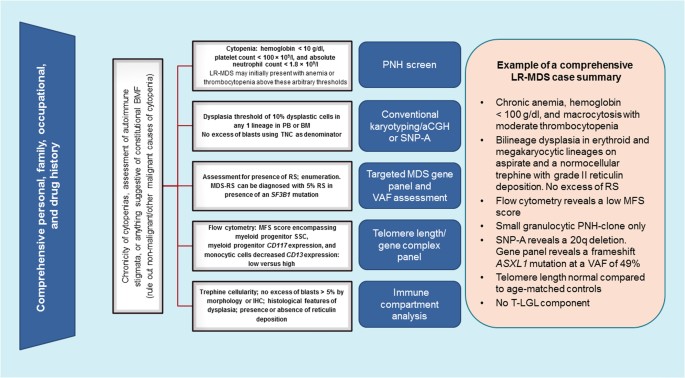Myelodysplastic Syndromes, commonly abbreviated as MDS, refer to a group of rare blood disorders that affect the bone marrow’s ability to produce healthy blood cells. These conditions are often characterized by low blood cell counts, which can lead to various complications such as anemia, infections, and bleeding problems. Understanding the intricacies of these syndromes is crucial for early diagnosis and effective management. In this article, we will explore the overview, types, causes, and treatments of Myelodysplastic Syndromes in detail.

Understanding Myelodysplastic Syndromes
Myelodysplastic Syndromes occur when something goes wrong in the bone marrow, the spongy tissue inside bones where blood cells are made. Normally, the bone marrow produces stem cells that mature into red blood cells, white blood cells, and platelets. In people with these syndromes, the stem cells do not mature properly, leading to a shortage of healthy blood cells. This malfunction can result in a range of symptoms and health issues.
Symptoms of Myelodysplastic Syndromes
- Fatigue and weakness due to anemia
- Frequent infections caused by a lack of white blood cells
- Bruising or bleeding easily because of insufficient platelets
- Shortness of breath during physical activity
- Pale skin
It is important to note that some individuals may not experience any symptoms at all, especially in the early stages. Regular medical check-ups and blood tests can help detect these syndromes before they progress.
Types of Myelodysplastic Syndromes
There are several types of Myelodysplastic Syndromes, each classified based on specific characteristics of the blood and bone marrow. The classification helps doctors determine the best course of treatment and predict the prognosis.
Refractory Anemia
This type is characterized by a low number of red blood cells. Individuals with refractory anemia often experience fatigue and weakness but typically have normal white blood cell and platelet counts.
Refractory Anemia with Ringed Sideroblasts
In this type, the bone marrow contains abnormal red blood cells called ringed sideroblasts. These cells have excess iron deposits, which can impair their function. People with this condition may also suffer from anemia.
Refractory Cytopenia with Multilineage Dysplasia
This form affects two or more types of blood cells. Patients may have low counts of red blood cells, white blood cells, and platelets, making them more susceptible to infections and bleeding.
Refractory Anemia with Excess Blasts
Individuals with this type have a higher percentage of immature blood cells, known as blasts, in their bone marrow. This condition has two subtypes based on the percentage of blasts present and carries a higher risk of progressing to acute myeloid leukemia.
Myelodysplastic Syndrome Associated with Isolated Del Chromosome Abnormality
This type is linked to a specific genetic mutation involving the deletion of part of chromosome five. It often presents with anemia and a relatively good prognosis compared to other forms.
Unclassifiable Myelodysplastic Syndrome
When the features of the syndrome do not fit into any of the above categories, it is labeled as unclassifiable. This type can still cause significant health challenges despite its ambiguous classification.
Causes of Myelodysplastic Syndromes
The exact cause of Myelodysplastic Syndromes remains unknown in many cases. However, certain factors are believed to contribute to the development of these conditions.
Genetic Mutations
Changes or mutations in the DNA of bone marrow cells can disrupt normal blood cell production. These mutations may occur spontaneously or be inherited, although inherited cases are rare.
Environmental Factors
Exposure to certain chemicals, radiation, or chemotherapy drugs used to treat other cancers can increase the risk of developing these syndromes. People who have undergone cancer treatment are particularly vulnerable.
Age and Gender
These syndromes are more common in older adults, with the majority of cases diagnosed in individuals over the age of sixty. Men are slightly more likely to develop these conditions than women.
Other Medical Conditions
Certain pre-existing medical conditions, such as autoimmune diseases or previous bone marrow disorders, may predispose individuals to these syndromes.
Treatments for Myelodysplastic Syndromes
Treatment options vary depending on the type of syndrome, the severity of symptoms, and the patient’s overall health. The primary goals of treatment are to manage symptoms, improve quality of life, and prevent progression to acute myeloid leukemia.
Supportive Care
Supportive care focuses on alleviating symptoms and managing complications. Common supportive treatments include:
- Blood Transfusions: Regular transfusions of red blood cells or platelets can help manage anemia and prevent bleeding.
- Growth Factors: Medications like erythropoietin can stimulate the bone marrow to produce more red blood cells.
- Antibiotics: Used to treat or prevent infections caused by low white blood cell counts.
Medications
Several medications are available to treat these syndromes directly:
- Hypomethylating Agents: Drugs such as azacitidine and decitabine can slow the progression of the disease by altering the way genes are expressed in bone marrow cells.
- Immunosuppressive Therapy: Medications like antithymocyte globulin and cyclosporine can suppress the immune system, which may help in cases where the immune system attacks the bone marrow.
Stem Cell Transplantation
A stem cell transplant, also known as a bone marrow transplant, is the only potential cure for these syndromes. Healthy stem cells from a donor replace the defective cells in the patient’s bone marrow. However, this procedure carries significant risks and is typically reserved for younger, healthier patients.
Targeted Therapy
Targeted therapies focus on specific abnormalities within cancer cells. For example, lenalidomide is effective for treating a subtype associated with a specific chromosomal abnormality. These therapies aim to block the growth and spread of cancer cells while minimizing damage to normal cells.
Lifestyle and Supportive Measures
In addition to medical treatments, lifestyle adjustments can help manage symptoms and improve overall well-being:
- Dietary Changes: Eating a balanced diet rich in iron, vitamins, and minerals can support blood health.
- Exercise: Light physical activity can boost energy levels and reduce fatigue.
- Emotional Support: Counseling or support groups can help patients cope with the emotional challenges of living with these syndromes.
Emerging Research and Future Directions
Ongoing research continues to uncover new insights into the causes and treatment of Myelodysplastic Syndromes. Advances in genetic testing and personalized medicine hold promise for more targeted therapies. Clinical trials are exploring novel drugs and combinations of treatments to improve outcomes for patients.
Scientists are also investigating the role of the immune system and inflammation in these syndromes, which could lead to innovative approaches to treatment. As our understanding of these complex disorders grows, so too does the hope for better management and potentially curative options.





